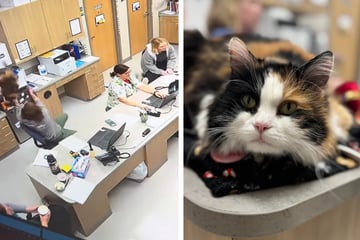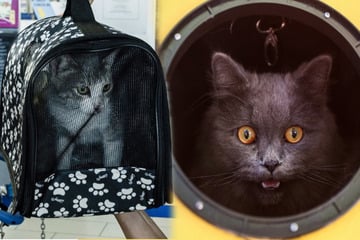Lost and stray cats: What to do and how to take care of them
I found a lost cat, but what do I do? At least once or twice, we've all come across a lone, ownerless cat. While most of these four-legged friends don't need our help, some certainly do. What should you do if you find a cat, who should you call, and what if it's a stray?
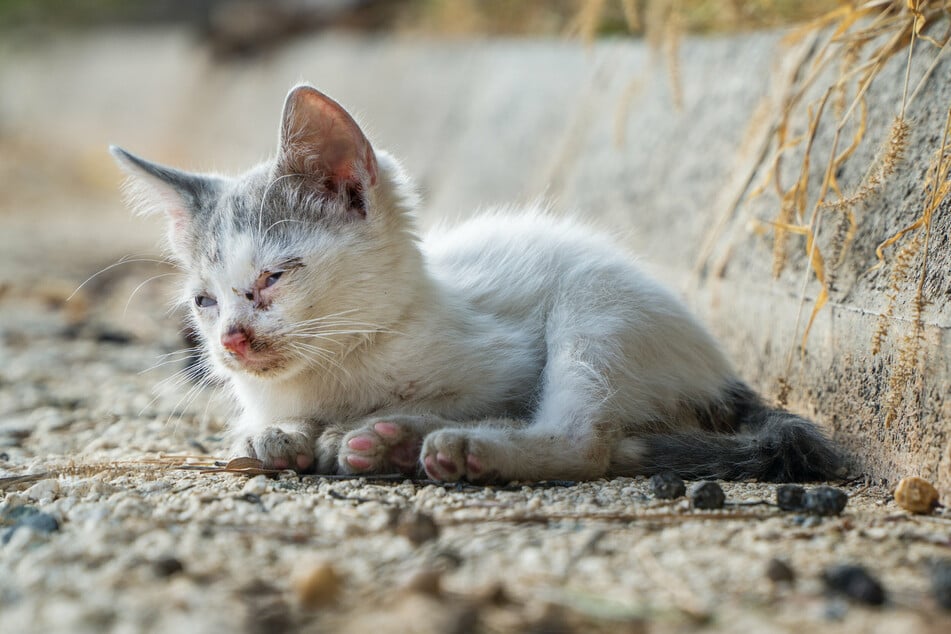
Cats have an excellent sense of direction and can usually find their way back home even if they have ended up several miles away.
That being said, mistakes always happen, and these little fluffballs can still get lost from time to time. Maybe they've been hurt or got stuck up a tree, or perhaps they were abandoned by some cruel owner who didn't want to look after them anymore.
There are many scenarios that could cause a cat to become feral, lost, or just simply confused.
In this cat guide, you'll find out what to do in these situations, where you should take any cat that you've found, and who you should call for help.
What should I do if I've found a lost cat?
It can be overwhelming to find a strange cat, and of course, you might not be sure of what to do.
The first thing to remember is to stay calm and do not try to approach it right away.
If you find a cat that you suspect may be feral or lost, you should refrain from giving it a pat. Instead, try to ascertain if the little guy needs your help.
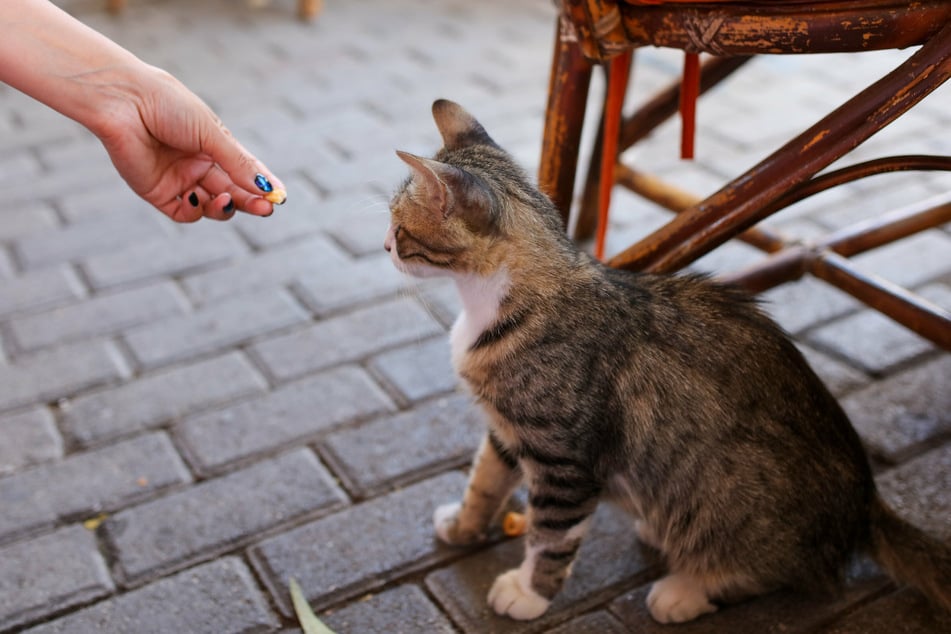
Is the cat lost or a stray?
The first thing to do before anything else is establish whether this is a stray or feral cat, or simply a domestic cat who's gotten a bit lost. Since pets usually wear collars – if you can get them to keep them on, that is) – your first move should be to check if the feline has one.
If it does not have a collar on, take a look at its behavior. Is it chilling in a staircase or a residential area? Is it scruffy and dirty? Is its fur matted? Is it really thin? Does it have bald patches? If the answers to these questions are yes, then it could likely be a stray or feral cat.
Meanwhile, if the cat is clean, friendly, and just wandering, it might just be someone's domestic cat.
If you are unsure whether the cat has an owner or whether it is homeless, you should try to catch the cat to bring it to safety. After that, it's best take it to a vet.
How to contain a found cat

If a cat is stray or feral, it should be contained, if possible.
These animals can not only spread diseases, but can damage local wildlife and even get aggressive towards humans.
It's easier said than done, though, because these little buggers aren't going to just wander into your arms and chill.
Grab some gloves, because things might get messy...
To safely capture a stray, feral, or lost cat, follow these steps:
- First, get some gloves, and wear long sleeves so that you are protected from potential cuts and scratches.
- A good way to catch a cat is to lure it into a carrier with cat food. This should be easy, but might take a while.
- It can be hard to entice a particularly stubborn or suspicious cat. In these cases, it is best to call the relevant authorities and have the cat captured professionally.
Who to call to report and pick up stray or lost Cats
If you have managed to safely contain a cat, your first move should be to call a veterinarian and take the feline to be checked out. A vet can have a look to see if the cat has a microchip, so that the owner can be contacted. Make it clear that this is a stray or lost cat, so that you don't get charged for a check-up.
In the case that there isn't much that the vet can do to find the cat's owner, it is likely that they will have a system in place to deal with abandoned or lost cats – for example, an animal shelter they have a relationship with. This is not always the case, though, and you may end up with a cat that you suddenly need to look after.
According to most local laws, found cats are considered "lost property" and must be declared to a relevant authority. So don't just take in a random cat and not tell anyone, as you could find yourself in trouble.
Where to bring lost or stray cats
Lost cats can be kept at your home if you have declared that they are lost and the relevant authorities are reaching out to get the kitty returned to its owners.
Meanwhile, though, stray and feral cats should most likely be taken to a safe locations, where they can be looked after by experts and hopefully relocated.
After the vet, take your new feline friend to one of these places:
- Animal shelters
- Animal welfare associations
- Police
- Public order office
- Lost and found office
Check For Kittens Near Found Cat
If you find a stray cat, you should always check your immediate surroundings for any kittens.
This especially goes for cats who seem restless, are running back and forth, or are a little testy. These signs could suggest that it is caring for a litter of babies, something that will certainly need to be sorted out by authorities if it turns out to be true.
You can identify a mother cat by their highly visible and pronounced teats. Animal welfare activists strongly advise all cat owners to have their felines neutered, but if a cat is a stray, it may not have had the procedure.
Should you look after lost or stray cats yourself?
If you have reported a lost or stray cat to the relevant authorities and offices, and they have established that it isn't a health risk to you or your family, you can take it home.
This only goes, of course, if you have been unable to locate the owner of the animal. As soon as they make themselves known, though, you need to hand over the cat.
There are specific requirements to fostering a feline. You will need to fit these necessities if you want to legally adopt a cat. They include:
- Knowledge about cat keeping.
- No animal hair allergy sufferers in your household.
- All members of your household must agree.
- You need to be able to supply the necessary food and accessories for cat care.
- You cannot have any prior animal abuse convictions.
How to find a lost cat's owner
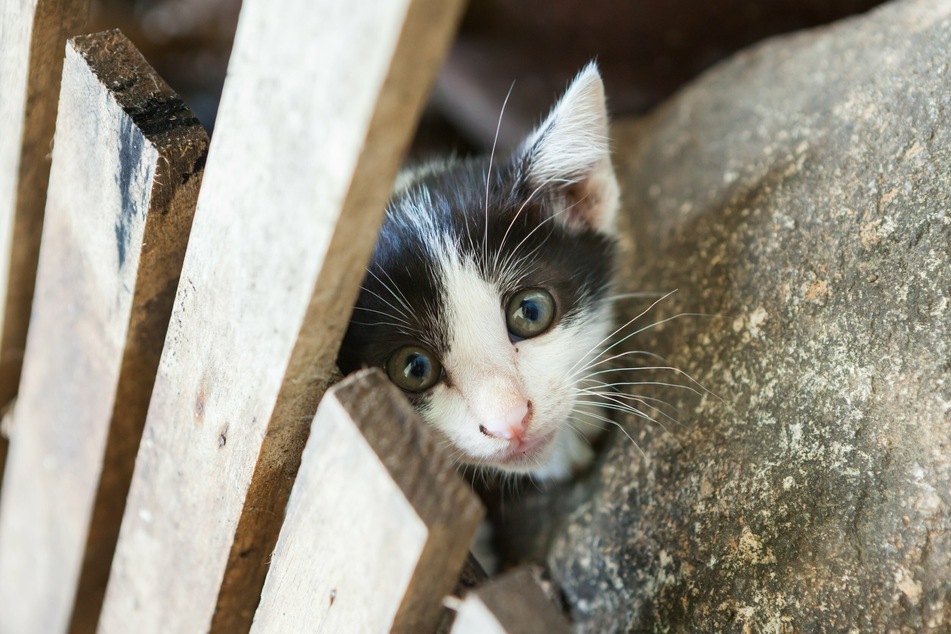
If you find a lost cat who is clearly domesticated and has just found its way a little too far from home, there are various things that you can do to get it back to its family.
Of course, you should first report your discovery to the relevant authorities, but there are a string of other steps you can take to improve the cat's chances at reuniting with its humans.
Your first move, after having the cat checked for a microchip, should be to leave information leaflets or flyers close to where you found the cat. That means creating a "Found Cat" poster to hang on trees, at bus stops, on street lamps, or in local shops. You can also think about posting advertisements in local newspapers or on social media.
When writing these kinds of flyers, it is always important to describe the found cat as accurately as possible, and to add a photo. This way, your cat's owner will be able to recognize their lost little one and reach out.
It is also a great idea to keep an eye out for missing cat signs or reach out to local veterinary practices, animal shelters, and pet stores. There are a variety of pet registries and authorities that you can also contact.
How to look after a found cat: Final tips
There are many reasons that could explain a random cat roaming the streets. If a cat doesn't have a collar and clearly isn't a house cat, or seems lost or stray, do not approach it unless you are sure that it is safe to interact with it.
If you take the appropriate actions after having found a seemingly lost kitty, you could end up reuniting the cat with is family or, in the case of a stray, matching it with a furr-ever home.
Cover photo: 123RF / Dmitrimaruta
